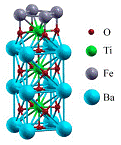Department of Physics and Astronomy: Publications and Other Research

Evgeny Tsymbal Publications
ORCID IDs
Tsymbal http://orcid.org/0000-0002-6728-5529
Document Type
Article
Date of this Version
3-1-2016
Citation
Physical Review B (2016) 93: 115101
Abstract
Atomically engineered oxide heterointerfaces show a range of novel phenomena not present in their bulk form, thus providing an additional knob to tune the functional properties across such interfaces. Here we show that for an oxide Schottky interface between metallic SrRuO3 and semiconducting Nb doped SrTiO3 (Nb:STO) the terminating surface of the substrate plays a crucial role in determining the electronic transport across it. Interestingly this is achieved by engineering a monolayer of a charge-neutral SrO layer across the Schottky interface and not by the insertion of charged layers at the interface, as has been demonstrated earlier. These changes in the energy-band line-up across a symmetric interface indicate the presence of different polar characters at the SrO and TiO2 terminations of the substrate. Owing to the presence of the same AO layer (SrO) in both SrRuO3 and Nb:STO, we propose an intermixing of Ru and Ti ions across the interface for the SrO terminated Nb:STO substrate. First-principles density functional theory calculations on these systems conform with our experimental findings, and indicate a resultant shift in the interfacial atomic plane stacking of SrRuO3 at the intermixed interface, leading to a modification of the electrostatic potential at the interface. The interdependence between the interfacial band alignment to the local atomic plane displacement across an intrinsically nonpolar oxide heterointerface is a key mechanism in realizing novel electronic properties in oxide based devices.


Comments
Copyright 2016, American Physical Society. Used by permission